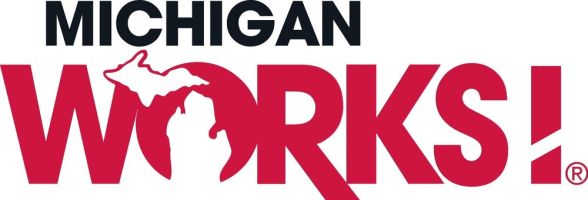TIPS FOR CREATING AND USING PROJECT MANAGEMENT PROCESS MAPS
These tips apply to each of the process maps reviewed.
- Always name the process and its start and end points before you begin.
- Practice creating charts with processes you are familiar with or interested in either in your personal life or work. Take an example and run it through more than one chart type to get a feel for the different process view and value they provide.
- When creating a process chart, involve people from each area of the process to contribute to or review your work.
SIPOC (Suppliers, Input, Process, Output, Customers) An essential outcome of the Define stage of the DMAIC process, a SIPOC map is a high-level overview of a business process that identifies the process being improved or created, sets the scope of the project, and gives team members and sponsors a common understanding of the process and project.
To create a SIPOC chart:
- Start with a Name and Statement about the Process, then identify the start and end points of the process. This helps identify the boundaries of your project. Consider the differences you might find between a process map titled Thinning Beets and one titled Growing Beets: From Seed to Harvest.
- Fill in each column of the SIPOC, in any order that makes sense to you, for the specific project. Keep these points in mind:
- S: A supplier is any person or organization that “feeds the process.” That could be a vendor or someone who works within the organization.
- I: An input is what a Supplier provides. It may be a product, a service, information, or approval.
- P: Limit your process column to key steps. The SIPOC is a high-level management tool. Most users recommend no more than 8 steps.
- O: What does each input into the process result in? That’s the Output. It could be a sales order, an invoice, a product.
- C: Who is/are the Customer(s) of the process and each output? A customer may be internal or external.
3. Check your work: Is your chart complete, is there an output for each input?
4. Involve other people in creating or checking your chart. It’s important to capture all suppliers and inputs. Involving other people ensures that is achieved. And, involving them in a group setting especially, can help the team “bond.”
Additional Uses: SIPOCs can be created for all main processes in an organization and used as a training/orientation tool for new employees and as source material for future LSS projects. When used in this manner, SIPOCS should be reviewed and updated on a regular basis.
SWIM LANE FLOW CHARTS A tool for showing who does what in each step of a process. Swim lane charts help clarify roles and identify areas that are susceptible to at least one of the eight Lean Wastes (i.e., wait times, errors, excess processing). Swim lane charts are useful when the work flow that is being charted may backtrack, loop, or have alternative actions. For example, a document is returned to the original submitter for more information include a document being returned to the original supplier for more information.
- Start with a Name and Statement of the Process then identify start and end points.
- Set up columns (First, identify all the people involved in the process. Enter each name into a column (either at the top of a vertical column or on the left side of a horizontal column. Your choice of format.
How to Process a Reprint Correction
| “Actor” | Action | Comments |
| Customer | Reports an error in a book. | |
| Team Assistant | Takes call and emails error information to development editor. | |
| Content Expert | Content Expert reviews concern and emails the assistant to enter the correction into the reprint database. | |
| Team Assistant | Enters correction detail into database and notifies customer correction will be made in future reprint. | If the Content Expert deemed the correction did not need to be made the Team Assistant would have notified the customer and there would be involvement by the Production Assistant or Reprint vendor. A formal swim chart could include flow chart symbols to show steps for that different decision. |
| Inventory Analyst | Schedules a reprint for title and sends notice to manufacturing buyer and Production Assistant. | |
| Manufacturing Buyer | Manufacturing Buyer sets up an order for the title. Notes that there is a correction and establishes to Printer date based on that information. | |
| Production Assistant | Sends correction information to typesetter and updates status of correction record to “In Processing.” | |
| Reprint Vendor | Requests files from archive. Updates database to show when request was made. Alerts Production Assistant. | |
| Production Assistant | Updates database to show files requested. | |
| Archive Assistant | Supplies files to reprint vendor. Updates database record to show date files were sent. | |
| Reprint Vendor | Receives files, makes corrections, notifies production assistant that work is done and sends new files to archivist. | The swim chart could show a different process for when files were problematic and the archivist needed to be involved.
In a later version of this process, several wasteful steps were eliminated. Reprint vendors were trained to re-archive files and also given access to the reprint database where they could enter dates and other details directly. database. \That allowed the Production Assistant and Archive Assistant to monitor projects through system-generated reports.
|
| Archive Assistant | Uploads corrected files to archive. | |
| Production Assistant | Updates database with files received and sent to archive date. Notifies manufacturing buyer that files are ready to go to printer. | |
| Manufacturing Buyer | Notifies printer to pick up new files from the archive. | |
| Printer | Pulls files to print. |
- Use flow chart symbols to indicate when different workflows are defined based on decision points. For example, in the workflow above, decision points that would result in a different are discussed in the Comments column.
- Analyze swim lane charts to see where workflow can be streamlined or improved. In the example chart, Comments show where this process was improved by giving the Reprint Vendor the ability to work directly in the database rather than provide information to the production or archive assistant.
- Update charts to reflect revised workflows.







